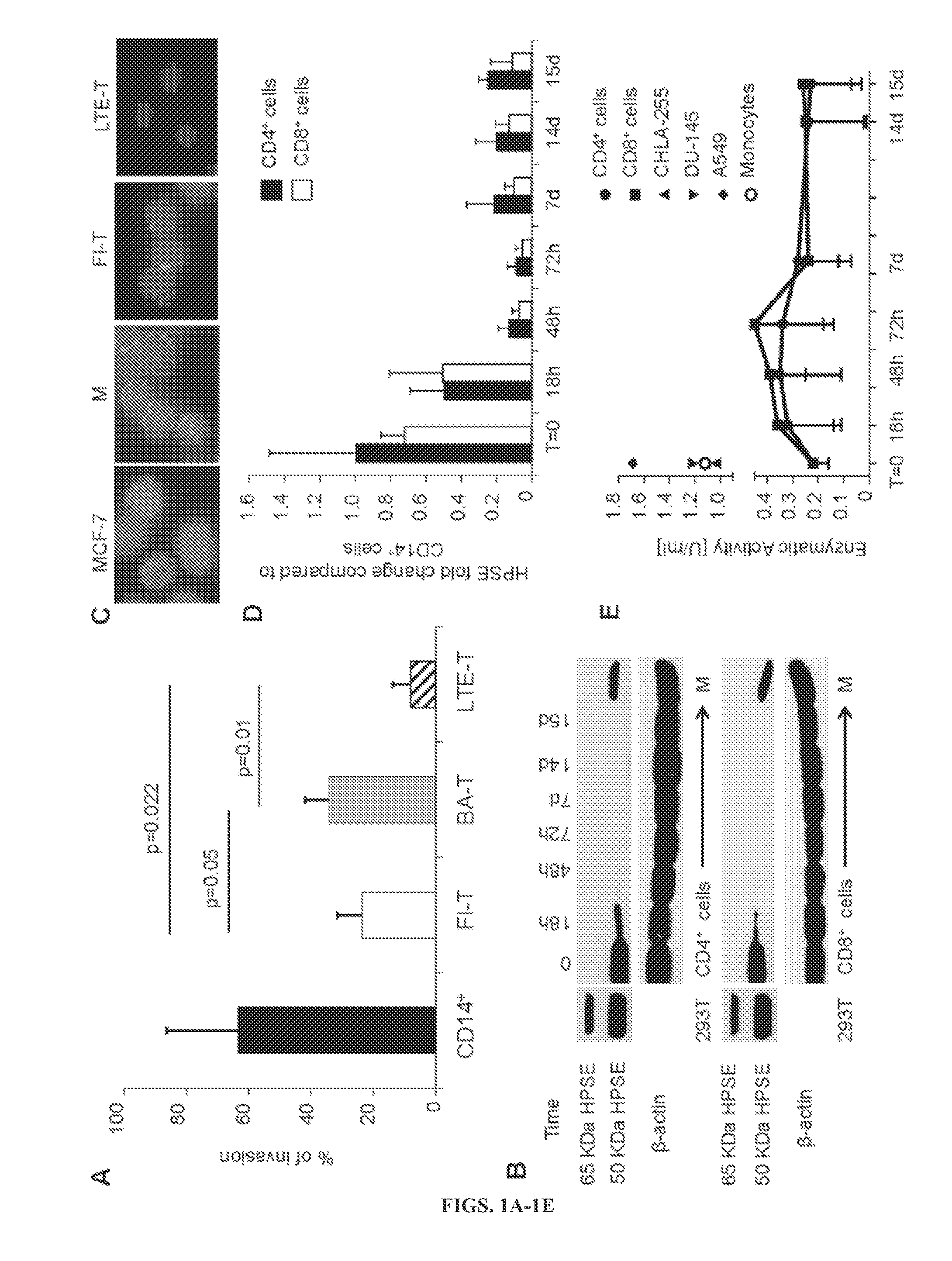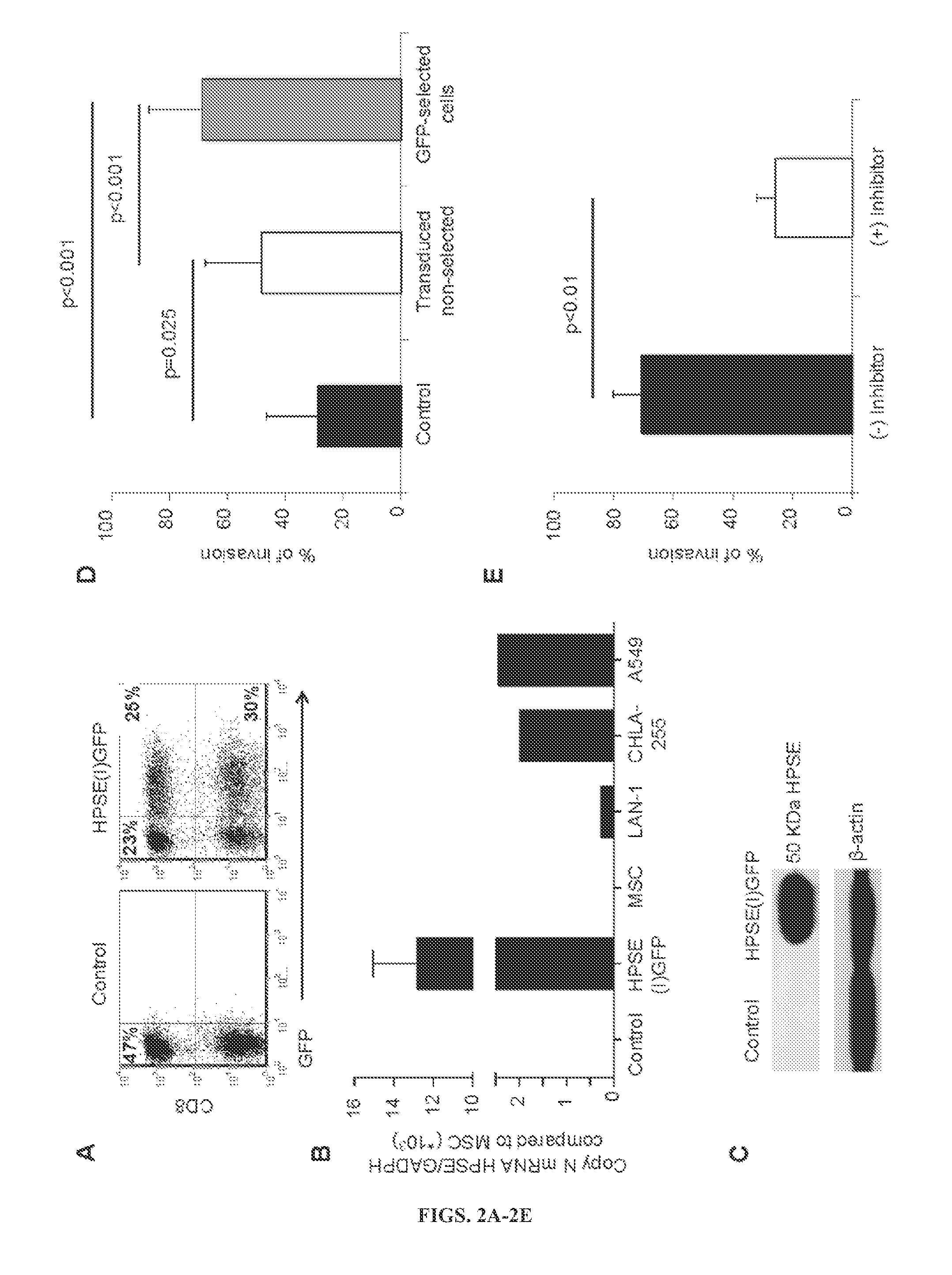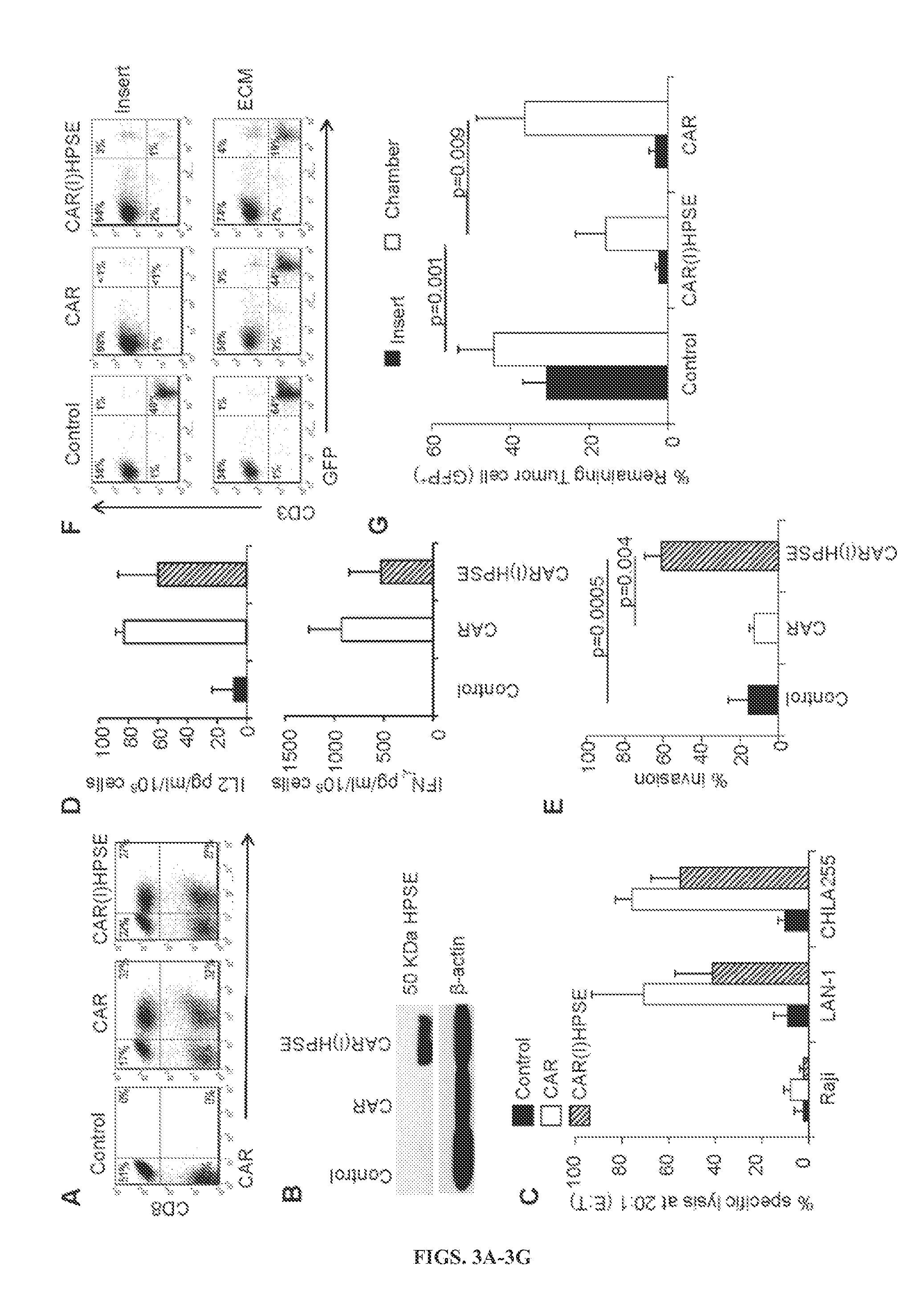Heparanase expression in human t lymphocytes
a human t lymphocyte and heparanase technology, applied in the field of immunotherapy, can solve the problems of cancer being refractory to treatment, and achieve the effects of reducing tumor load, slowing the growth of said cancer, and reducing the number of tumor cells
- Summary
- Abstract
- Description
- Claims
- Application Information
AI Technical Summary
Benefits of technology
Problems solved by technology
Method used
Image
Examples
example 1
Restored Expression of Heparanase in Tumor Specific T Cells Enhances their Antitumor Effects in a Neuroblastoma Model
[0151]Adoptive T-cell based therapies have shown promising results in patients with lymphomas and other hematological malignancies, but appear less effective in solid tumors. Specifically, recent clinical trial in neuroblastoma (NB) showed antitumor efficacy by CAR-modified T cells only in patients with modest bulk disease, suggesting that ex vivo expanded effector T cells may have limited capacity to penetrate and migrate through the extracellular matrix (ECM) of solid tumors.
[0152]Although the mechanisms that regulate migration of activated and effector T cells through the ECM have not been extensively investigated, the inventors found that, unlike circulating T cells, ex vivo expanded T cells lack the expression of heparanase (HPSE), a crucial enzyme involved in the degradation of the heparan sulphate proteoglycans (HSPGs), which compose the subendothelial basement...
example 2
Restoring Deficient Expression of Heparanase in Tumor-Specific T Lymphocytes Enhances their Anti-Tumor Effects
[0153]Expanded T Cells have Impaired Capacity to Degrade the ECM Due to the Lack of HPSE.
[0154]It was first assessed whether ex vivo expanded T cells were defective in their capacity to degrade the ECM. Using a Matrigel-based Invasion assay, they compared freshly isolated resting T cells (FT) (naive, effector-memory and central-memory T cells), briefly activated T cells (BA-T) exposed for 24 hours to OKT3 / CD28 Abs, long term ex vivo expanded T cells (LTE-T) (activated and cultured for 12-14 days) (central-memory and effector-memory T cells), and freshly isolated monocytes (positive control). As expected, monocytes isolated from 5 different healthy donors showed the highest capacity to degrade the ECM (63%±23%) (FIG. 1A). Consistent with previously reported data in rodents (de Mestre, et al., 2007), BA-T showed enhanced invasion of the ECM as compared to FT (34%±8% versus 23%...
example 3
Summary of Certain Embodiments
[0170]The data show that the prolonged ex vivo culture required to generate tumor antigen-specific T cells for treatment of cancer impairs their production of HPSE, a key player in the degradation of the HSPGs that compose the tumor ECM. Lack of HPSE limits tumor-directed T cell migration through the ECM, impeding access to the tumor cells and reducing their ability to eliminate solid tumors. Forced expression of HPSE by gene transfer restores the capacity of CAR-redirected T cells to degrade HSPGs and enhances their antitumor effects in a NB model.
[0171]The capacity of T lymphocytes to extravasate through blood vessels to the tumor site is crucial for their antitumor function. While FT and BAT-L show detectable protein expression of the active 50 kDa form, LTE-T generated according to protocols currently used to manufacture T-cell lines for adoptive immunotherapy are HPSE deficient. The experiments show that HPSE mRNA is immediately down-regulated afte...
PUM
| Property | Measurement | Unit |
|---|---|---|
| time | aaaaa | aaaaa |
| diameter | aaaaa | aaaaa |
| time | aaaaa | aaaaa |
Abstract
Description
Claims
Application Information
 Login to View More
Login to View More - R&D
- Intellectual Property
- Life Sciences
- Materials
- Tech Scout
- Unparalleled Data Quality
- Higher Quality Content
- 60% Fewer Hallucinations
Browse by: Latest US Patents, China's latest patents, Technical Efficacy Thesaurus, Application Domain, Technology Topic, Popular Technical Reports.
© 2025 PatSnap. All rights reserved.Legal|Privacy policy|Modern Slavery Act Transparency Statement|Sitemap|About US| Contact US: help@patsnap.com



